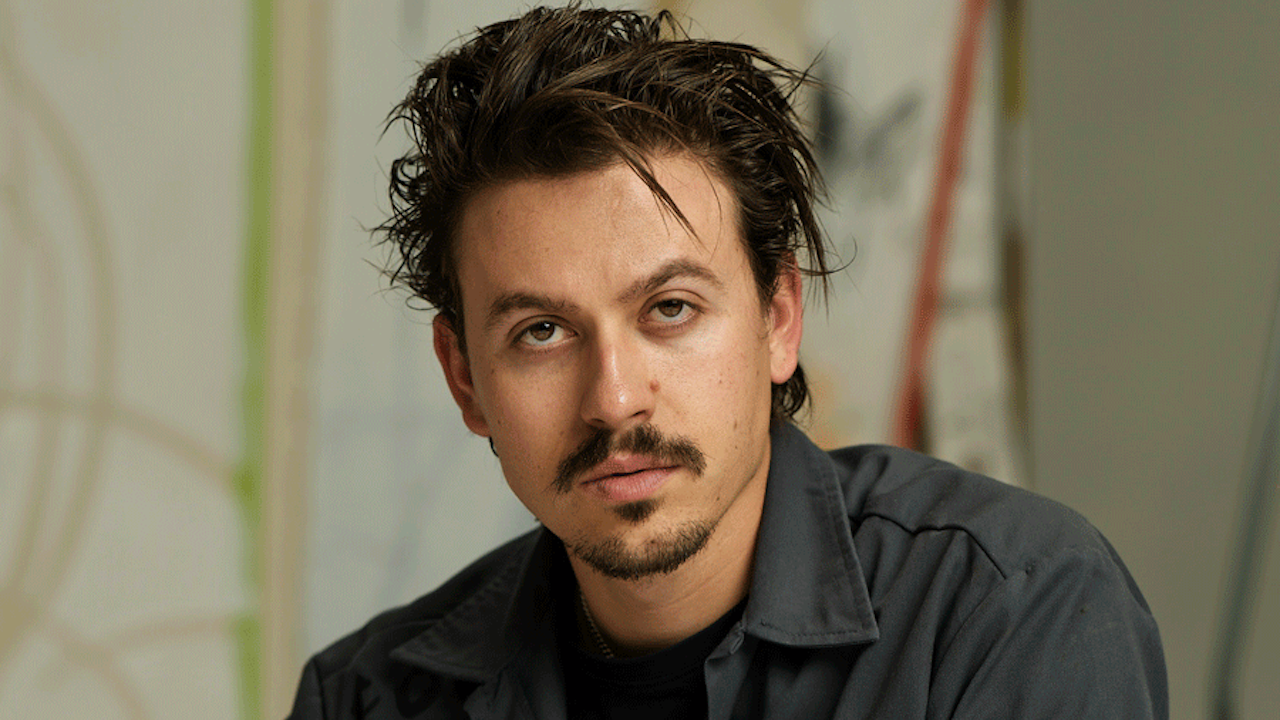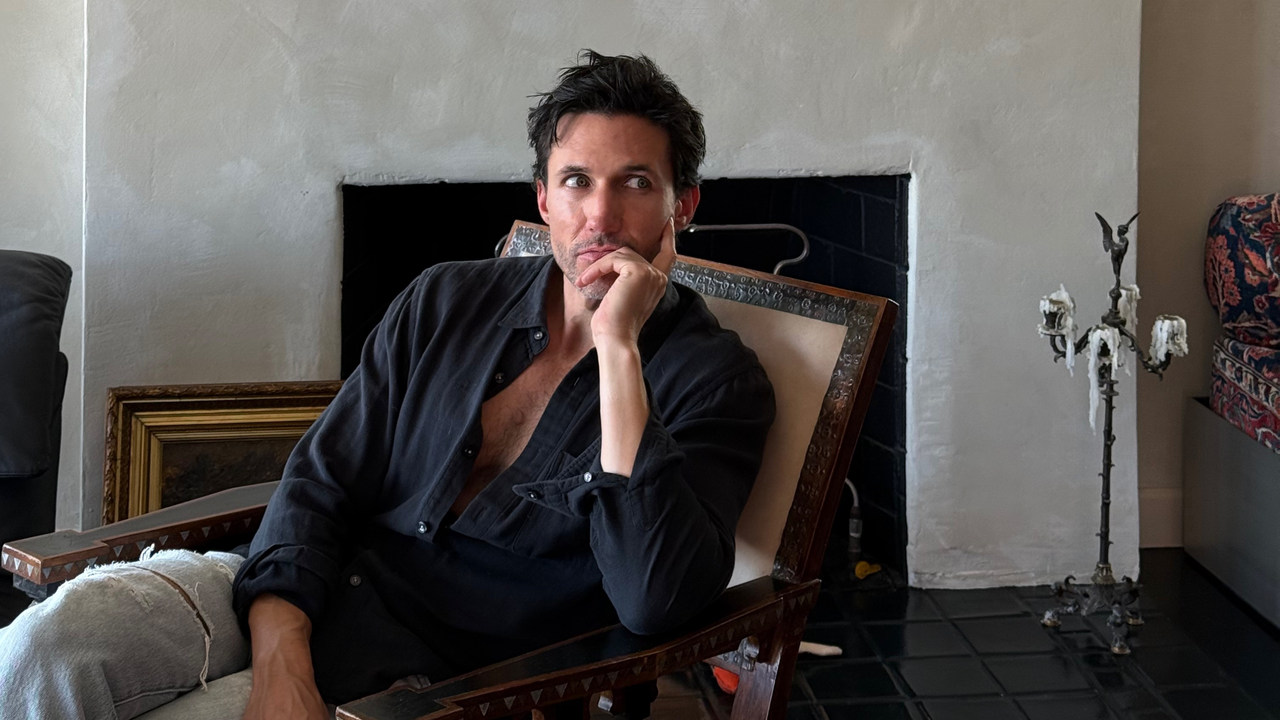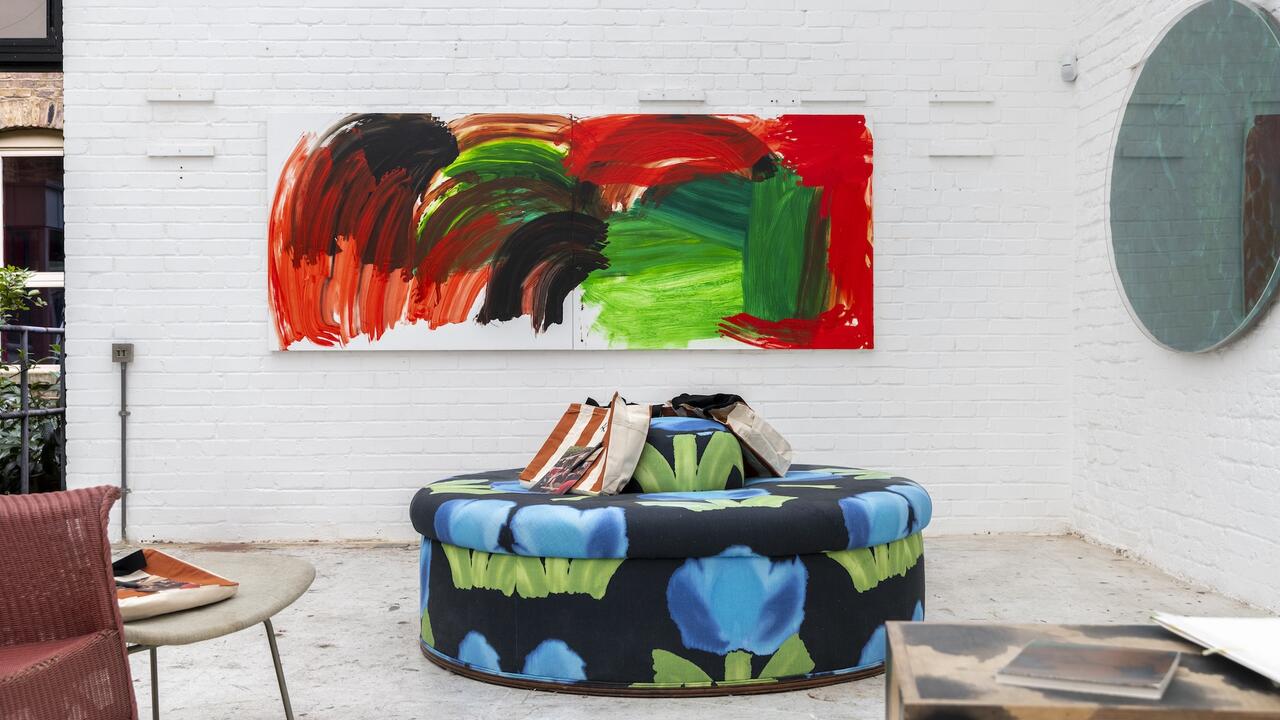Context is Half the Work
In 1966, the Artist Placement Group was founded to integrate artists into businesses and corporations around Britain. Did the strategy bear fruit?
In 1966, the Artist Placement Group was founded to integrate artists into businesses and corporations around Britain. Did the strategy bear fruit?

When the artist couple Barbara Steveni and John Latham founded the Artist Placement Group (APG) in London in 1966, to arrange invitations for artists to take up residencies at various companies throughout Britain, they were among a number of practitioners during the 1960s who expanded on the ‘art & technology’ collectives of the previous decade, seeing potential for new kinds of collaborative relationships between art and industry. That same year two similar groups emerged in New York and Los Angeles: the Bell Labs scientist Billy Klüver joined with Robert Rauschenberg to create Experiments in Art and Technology (EAT) – Klüver described it as a ‘service organization’ that brought science to the aid of artists – and curator Maurice Tuchman at the Los Angeles County Museum of Art began recruiting Californian companies to partner with artists in the formation of the museum’s ‘Art & Technology Program’. What distinguished APG from its peers were the group’s heavily theorized underpinnings, along with the way in which its philosophies and practice aggressively discounted the idea that science and industry should be at the service of artists. Instead, APG favoured the notion that artists could have a positive effect on industry through both their inherent creativity and their relative ignorance of its conventions.
Perhaps not surprisingly, APG’s roots lie in Fluxus. Steveni herself was active in Fluxus circles, and one night when she was out scouring London factories for some materials that Daniel Spoerri and Robert Filliou needed for an exhibition, it occurred to her that instead of picking up industrial residue, artists ought to be inside the factories working within the systems of production. Latham, who was travelling, returned to find his wife’s radical approach to the ‘applied arts’ a perfect vehicle for many of his theoretical interests. Friends and artists Maurice Agis, Stuart Brisley, Barry Flanagan, David Hall, Ian MacDonald-Munro, Anna Ridley and Jeffrey Shaw soon joined Steveni and Latham and APG was born.
In 1968 the group set about organizing its first event, the Industrial Negative Symposium in London, which included Klüver and EAT. Steveni convinced the Arts Council to provide some funding and to make The Hayward Gallery available for an exhibition titled ‘Art & Economics’, to be held in 1971, which would showcase the group’s activities up to that point in a corporately structured environment. With The Hayward show in the works Steveni arranged the first placement in 1969 – Garth Evans at the British Steel Corporation – inaugurating a very productive two years for the organization. Evans’ placement was followed by that of Hall at British European Airways and Scottish Television. Brisley went into Hillie Co. Ltd, Leonard Hessing worked with ICI Fibres, Lois Price joined Milton Keynes Development Corporation, and MacDonald-Munro and Marie Yates were invited by the Centre for the Study of Human Learning at Brunel University. In addition, Latham took up placements with the National Coal Board and Proteus Bygging. Ian Breakwell and David Parsons were placed with British Rail, and Andrew Dipper undertook a residency with Esso Petroleum.
APG has suffered somewhat in historical accounts of socially engaged practices, in part perhaps because it is difficult to integrate what are essentially its three parallel histories. Steveni bore the management responsibilities; her writing on the organization’s structure and her correspondence with placement companies and government offices forms the ‘structural’ history of APG. The ‘operational’ history was produced by the artists who conducted the placements, as detailed in a number of Studio International articles published during the group’s first decade, and in exhibitions such as The Hayward show, organized under the auspices of APG. Latham constructed APG’s ‘theoretical’ narrative, and while the verbose density of his language at times provides a philosophical framework for the group’s ambitions, its relationship to the actual work of the organization was also a source of conflict among its members and their peers. Gustav Metzger, for example, who participated with Latham and Steveni in the Destruction in Art Symposium in 1966, would come to critique APG in 1972 for both what he called its ‘prosaic’ history – essentially Steveni’s structural formulations, which he found to be unremarkable and crude – and the preposterousness of its ‘sublime’ history, laid out by Latham, which he considered a threat to clarity of thought, if not to the positive relationship between art and technology in general.
The core of Latham’s grander cosmology was an approach he called the ‘event structure’, which was predicated on a long horizon (‘time-base’) for measuring the effect of ideas and actions. Central to the ‘event structure’ was Latham’s notion of the ‘least-event’, an idea borrowed from scientist friends, which he saw as a kind of zero moment from which things flowed forward into the present and beyond. (He found a visual representation of the ‘least-event’ in a can of spray paint, whose single burst of dots onto a white sheet of paper perfectly symbolized his sense of an action that ricocheted forward out into the world from a single point of origin.) Latham located art’s ‘least-event’ as taking place in 1951, when Robert Rauschenberg famously displayed his white canvases as an art work to be supplemented by the shadows of its viewers. From that blank slate, which annexed the ambience of its surroundings, we can spray forward through John Cage’s famous silent performance 4’33’ (1952) and the numerous Fluxus events that followed, arriving at APG’s desire to cross the threshold of art entirely to reach the mechanics of society. Instead of pulling the audience and environment into the art work, APG located the work out in the world, a tabula rasa on which society’s approval of artists (or lack thereof) would register.
Rauschenberg’s proposition is summarized in APG’s central tenet, which the group outlined in a show at the Kunsthalle Dusseldorf in 1970, that ‘context is half the work’. With this is mind APG sought to reframe the traditional patronage relationship, aiming to integrate artists into a participatory role in business matters and decision-making at their host organizations. As Latham and Steveni described it retrospectively in 1990, ‘the status of artists within organizations must necessarily be in line with other professional persons, engaged within the organization’. And yet APG insisted on the independence of its artists, ‘bound by invitation rather than by instructions from authority within the organizations, department, [or] company’. These were invitations that Steveni laboured to achieve despite, and expressly because of, the artists’ lack of pertinent specialized experience or knowledge – an irony that made her efforts seem at times laughably naive to those she approached. An IBM official famously responded: ‘If you [APG] are doing what I think you are doing, I wouldn’t advise my company to have anything to do with you. And if you aren’t, you’re not worth taking into account anyway.’
The true radicality of APG may lie in these paradoxes and contradictions at the heart of the group’s model, which often seemed to arise from the tension between the structural and theoretical sides of the organization. Latham developed a definition of the artist as an ‘incidental person’ – seemingly focusing on the small scale of an artist’s action within the loaded system of industry and what he saw as its enormous butterfly-effect-like possibilities over time – whereas one gets the sense that Steveni’s pitch to placement hosts necessarily described a modest, non-disruptive presence for the artist. Of course – and this is where the tension comes in – APG’s very argument for the value of the artist’s presence in the company was rooted in a deliberately outsized view of the artist’s role in society.
This conflict played out across various placements. George Levantis, who in 1974 was placed aboard three different shipping vessels belonging to Ocean Trading and Transport Ltd, had a sculpture tossed overboard because it didn’t fit with what his hosts expected of him: namely, to relieve boredom among the crew by teaching them watercolour painting. While Levantis found inspirational the open brief that APG demanded, remarking that ‘the undefined nature of my position proved to be the source of my ideas’, his shipmates had other ideas. The hosts, after all, paid stipends to the artists and sometimes struggled to understand their resistance to a service relationship. As an Ocean Trading official put it: ‘If we had wanted some kind of sociologist aboard, I’d have hired a sociologist.’
Even the Arts Council, which seemed an early ally, found cause to complain. Following The Hayward exhibition in 1971 – for which the group lived in the gallery and presented conversations between artists and industrial executives in a ‘boardroom’ format, alongside films, photographs, reports and other results of the placements – the Arts Council revoked APG’s funding, alleging that the group was ‘more concerned with social engineering than with straight art’. Not surprisingly, this rejection galvanized Steveni to redirect APG’s activities towards government departments. While commercial residencies continued throughout the 1970s, APG successfully placed a number of artists within government offices, including a stint for Breakwell at the Department of Health and Social Security, who produced a number of controversial films while in residence at a mental hospital. After Joseph Beuys invited Latham to discuss government placements at Documenta 6 in 1977, APG increasingly established connections abroad and effected a number of placements in Europe during the 1980s. By 1989, with activity winding down, Steveni refocused APG into a research body she called ‘Organization and Imagination’ (O+I), shifting it’s attention more to advocacy and policy than actual placements. Nevertheless, the Utopian vision of what she called ‘repositioning art in the decision-making processes of society’ remained and continues in force.
The group described their artists as ‘committed “to the making of no product, work or idea” on behalf of the company (unless volunteered)’, and it is perhaps most interesting to consider APG’s activities within the period’s broader movement away from the art object – not towards a kind of performance but as a socially applied form of Conceptual dematerialization. Robert Barry’s radio-wave transmitters emphasized invisible energy; Latham described his ‘event structure’ approach as an involvement with ‘the human resources and the energies utilized within them’. James Lee Byars spoke of collecting moments of people’s attention into a museum; APG focused on attention as a kind of economy. Latham advocated that society should consider the number of people affected by an idea, the period of time the idea is influential, and the degree of attention and awareness it achieves. Not a new formulation, per se, but introduced in a new context.
The approach of APG makes evident artists’ obsession during the 1960s and ’70s to engage with the new ‘systems’ of social science, culture and industry, but it was among the first to model in its practice the shift towards a service-based economy that was occurring in society at large, as well as the rise of intellectual property as a product. Latham mirrored other artists of his moment, such as Stephen Willats, in over-theorizing and systematizing often self-evident information into sublime new forms that seemed somehow different – if only because they were presented as art.
In that sense, context could become the entire work. This dematerialization, this emphatic refusal to give form or definition to the placement itself, seemed designed expressly to critique the notion of an object- and product-based society – and in that way may have gone further than any other contemporaneous Conceptual practices, most of which were content to take aim simply at the art market and the museum. APG did so sometimes at significant cost, vanishing into its rhetoric and practice, lost in what looked to anyone else like straightforward social service activities, albeit practised by artists. Certain of its activities, resulting only in government reports and correspondence, disappeared into the bureaucracy. Most of the early APG materials filed at the Arts Council before 1972, for example, are now lost or inaccessible (whether deliberately or not), and Breakwell’s work with the Department of Health and Social Security may still be subject to the Official Secrets Act.
Of the variety of projects from the last decade or so that have mimicked or inhabited corporate models while also making participation and collaboration with audiences a core element of their meaning, few seem to have achieved APG’s delicately Utopian co-existence of antagonism and service; fewer still share that aspiration. When artists work in open-endedly collaborative relationships – projects such as Marjetica Potrc’s infrastructure improvements in impoverished communities, Superflex’s guarana co-operative and soft drink company in Brazil, Thomas Hirschhorn’s Bataille Monument (2002) or France Morin’s The Quiet in the Land residencies, to name only a few – they tend to do so directly with communities, rather than through the infrastructure that serves them. The most ambitious ones nevertheless force us to ask the questions begged by APG’s contextual legacy: Where is the art? Where is the social value delivered? Who is assuming the risk?
But on the business side these days such questions don’t even seem relevant. Nevertheless, it is hard not to think of the ‘least-event’ that was APG as corporations increasingly devise ways to bring artists and art into the fold (however well defined) as designers of logos, handbags, cars or shop windows. And as for government? ‘It should not be unreasonable to predict’, APG prophesied in 1971, ‘that as a result of carefully directed dissemination of the basic concepts, in 20 years some thousands of millions of people will have their lives significantly improved, qualitatively, as compared with their condition today; many major policy decisions will have been altered and innovations introduced of a kind which will be fundamentally democratic on a wider base than is possible under the present short-term considerations of power.’ Certainly one such example of a major policy decision that has been introduced would be the Arts Council’s habit of handing down strictures to funded groups and institutions demanding a certain percentage increase in attendance by a given minority audience. It’s yet another ironic marker of APG’s success. When O+I recently applied for funding, the Arts Council refused to support it. Call it the straight art of social engineering.













